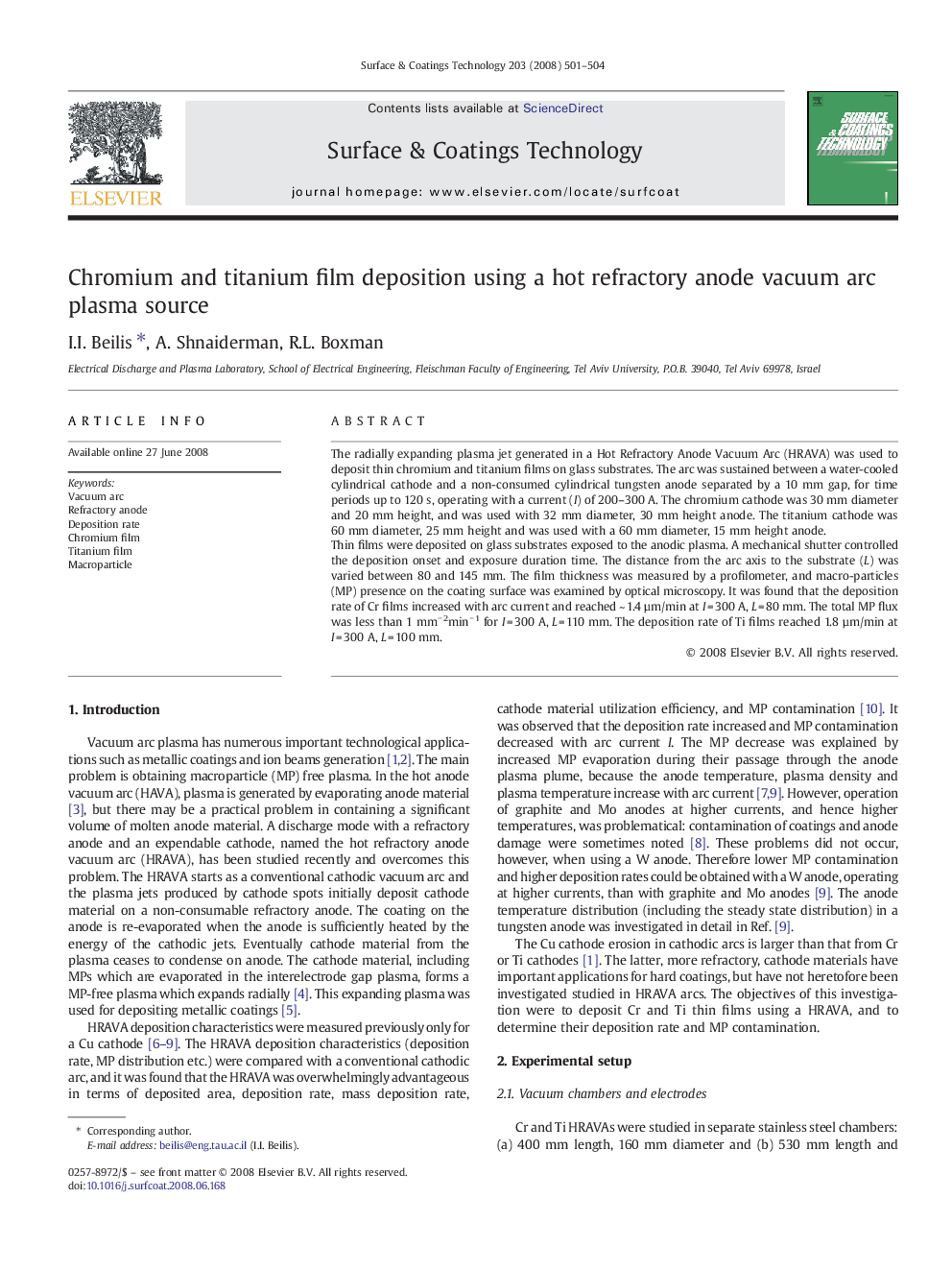| Article ID | Journal | Published Year | Pages | File Type |
|---|---|---|---|---|
| 1659985 | Surface and Coatings Technology | 2008 | 4 Pages |
The radially expanding plasma jet generated in a Hot Refractory Anode Vacuum Arc (HRAVA) was used to deposit thin chromium and titanium films on glass substrates. The arc was sustained between a water-cooled cylindrical cathode and a non-consumed cylindrical tungsten anode separated by a 10 mm gap, for time periods up to 120 s, operating with a current (I) of 200–300 A. The chromium cathode was 30 mm diameter and 20 mm height, and was used with 32 mm diameter, 30 mm height anode. The titanium cathode was 60 mm diameter, 25 mm height and was used with a 60 mm diameter, 15 mm height anode.Thin films were deposited on glass substrates exposed to the anodic plasma. A mechanical shutter controlled the deposition onset and exposure duration time. The distance from the arc axis to the substrate (L) was varied between 80 and 145 mm. The film thickness was measured by a profilometer, and macro-particles (MP) presence on the coating surface was examined by optical microscopy. It was found that the deposition rate of Cr films increased with arc current and reached ~ 1.4 µm/min at I = 300 A, L = 80 mm. The total MP flux was less than 1 mm− 2min− 1 for I = 300 A, L = 110 mm. The deposition rate of Ti films reached 1.8 µm/min at I = 300 A, L = 100 mm.
